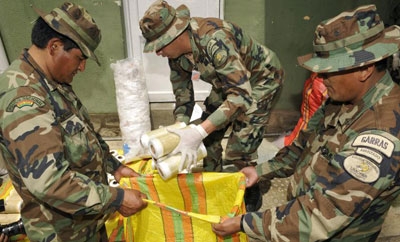Peru and Bolivia have met to reinforce cooperation on anti-drug efforts along their shared border, and to combat the growing air traffic moving coca base and cocaine from Peru into Bolivia, an air bridge which, due to a lack of technology, the authorities seem unable to cut.
The two countries recently staged the First Regular Meeting of the Binational Border Commission in Lima, which closed on November 28, and during which officials from both countries discussed their joint security challenges and possibilities for cooperation, reported La Razon.
The event came on the back of a recent agreement for special counternarcotics units from each country to coordinate operations in the border area.
Bolivia’s Vice-Minister of Social Defense Felipe Caceres last week declared the frontier zone was home to 70 clandestine landing strips for drug planes, a day after a light aircraft piloted by a Bolivian, and carrying 270 kilos of cocaine, was intercepted by authorities in central Peru.
InSight Crime Analysis
The efforts by Peruvian and Bolivian authorities to join forces in the fight against drug trafficking come several months after the two countries pledged to improve counternarcotics cooperation alongside Brazil. Earlier this year, Bolivia announced plans to work with Brazil on border security, in a move which seemed to demonstrate Bolivia’s increasing acceptance of the threat posed by drug traffickers.
The move by Bolivia to forge closer regional ties is also likely part of an overall effort to counteract the loss of US aid, following the expulsion of US counternarcotics forces by the government of Evo Morales. While Peru has seen US aid increase significantly, Bolivia is now relying more heavily on the EU, as well as Venezuela, for much needed funding.
SEE ALSO: Coverage of Bolivia
One of the biggest challenges facing both Peruvian and Bolivian authorities is the lack of radar to detect the drug flights moving up to 20 tons per month out of Peru’s drug producing heartland — a series of river valleys known as the VRAEM — many of which are destined for Bolivia. While the exact details of the cooperation agreement have not been announced, it is likely to include intelligence sharing in order to more effectively identify drug flight networks and their operatives.

